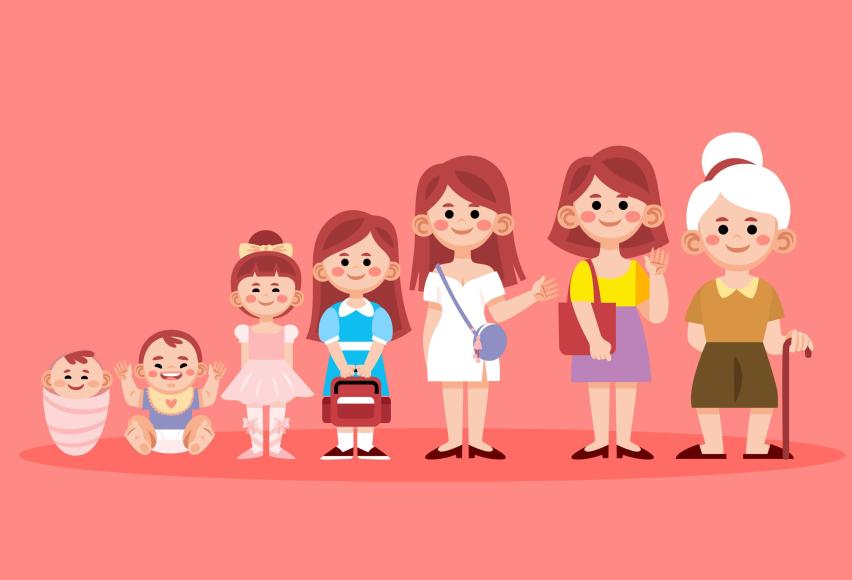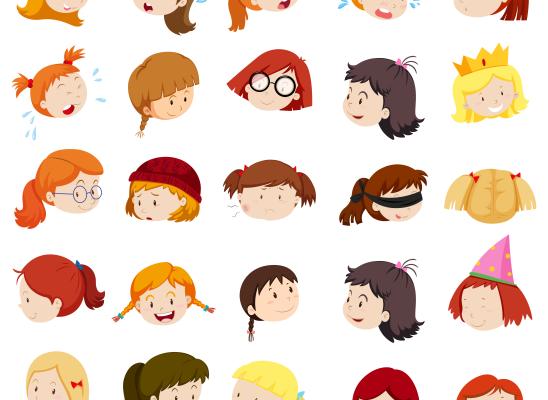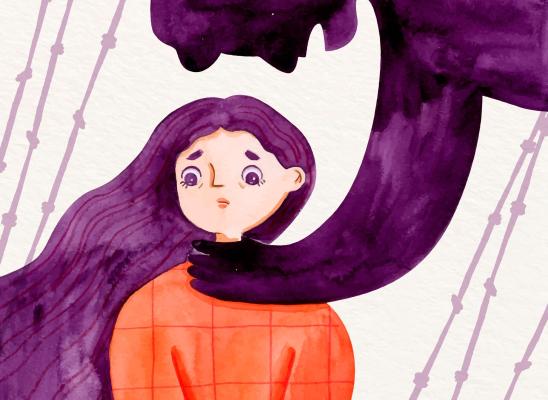Hair Pulling Across the Lifespan

Online test
Find out the severity of your symptoms with this free online test
Trichotillomania (TTM) is a body focused repetitive behavior (BFRB) characterized by the repetitive pulling of one’s hair that results in significant hair loss, distress, and impairment in psychosocial functioning. While it is classified as an Obsessive-Compulsive Related Disorder (OCRD), it has its own distinct criteria and presentation.
TTM frequently emerges in childhood or early adolescence. It generally affects boys and girls equally in childhood, but by adulthood 80-90% of reported cases are women. Although TTM can occur anywhere along the child developmental continuum, even in infancy. Without treatment, hair pulling disorder tends to be a chronic condition. Symptoms may wax and wane over the course of a lifetime.
TTM is a highly heterogenous disorder meaning that people experience it in different ways. For example, some people may only pull their scalp hair. Others may pluck eyelashes or eyebrows or even public hair. Some people pull in a very intentional focused way. Others tend to engage in more automatic, almost trance-like, pulling and may not even be aware that they’ve pulled.
TTM is also associated with other mental health issues such as anxiety, depression, diminished self-esteem, and impaired social and academic functioning. It is also not uncommon for TTM to co-occur with other BFRBs such as skin picking.
From Childhood to Adulthood
Hair pulling is very common in childhood and often resolves itself, especially in very young children.
TTM typically emerges in late childhood or early adolescence. Studies have shown that the age of onset for TTM is actually bimodal. In other words, there are two peak periods when onset tends to occur. The first peak occurs around age 7 or 8. The second peak of onset occurs around age 11 or 12. This is important because studies suggest that severity of symptoms seems to be higher in adolescence. Left untreated, the prognosis becomes poorer as onset age approaches adulthood. This means that adolescent and young adult sufferers usually have a more long-lasting form of the disorder and may not respond as well to treatment.
Just as we know that BFRBs are highly heterogeneous, how they present also seems to vary based on a person’s stage of life. After all, what TTM looks like in children is significantly different to how it may present in adolescence. Do symptoms change over time? Does having another BFRB change the dynamics? A new study explores how the symptoms of individuals with TTM+skin picking compare to individuals with a single BFRB and provide new insights that may help inform treatment.
Across the Life Span
Researchers took a look at TTM in a group of participants from ages 4-67. Their goal was to examine the clinical characteristics of the co-occurrence of TTM and skin picking across the lifespan. Participants were divided between three groups:
- Those with TTM
- Those with skin picking
- Those with both TTM and skin picking (TTM+skin picking)
They surveyed participants over a period of 22 months to assess co-occurring conditions and current symptoms:
- All three groups reported high rates of anxiety, depression, obsessive-compulsive disorder (OCD) and attention deficit hyperactivity disorder (ADHD). The participants with TTM+skin picking showed the highest rates of ADHD. The researchers speculate that this may indicate that ADHD and skin picking may share deficits in shared pathways, possibly related to impulse control.
- For people with both TTM and skin picking, those with more severe hair-pulling symptoms also appeared to have worse skin picking symptoms.
- Styles were more similar than different. More focused hair pullers tended to be more focused skin pickers suggesting that the two disorders may share similar mechanisms.
- Hair pulling and skin picking severity peaked at the transition from adolescence to adulthood.
- Styles of hair pulling and skin picking appeared to change across the lifespan. They found a trend towards more focused and less automatic hair pulling from childhood into adolescence with a trend back towards more focused pulling later in life.
So, what can these findings mean for treatment?
The study authors suggest that knowing the peak age of severity can guide the type and intensity of needed treatment interventions. Early detection and intervention may help to reduce symptom severity and reduce the risk of developing comorbid issues such as anxiety and depression.
Because TTM and skin picking may share similar mechanisms, it may aid in tailoring treatments. They note that cognitive behavioral therapy (CBT) and Habit Reversal Training (HRT) have been used successfully to treat BFRBs, particularly the behavioral components. Other approaches like enhanced - Acceptance and Commitment Therapy (ACT) have been shown to help address the emotional regulation needs. They suggest that people who have both TTM and skin picking may benefit from therapeutic approaches that address multiple BFRB symptoms simultaneously.
While more research is needed, this study highlights the importance of viewing disorders like hair pulling not just in a moment but over a lifetime. Understanding how hair pulling and skin picking evolve and co-occur may aid in the development of more effective and informed treatment options for those living with a hair pulling or skin picking disorder.
References
1. Hair pulling – TLC Foundation for BFRBs. (2023, April 21). TLC Foundation for Body-Focused Repetitive Behaviors. https://www.bfrb.org/bfrbs/hair-pulling
2. Grant, J. E., Redden, S. A., Leppink, E. W., Odlaug, B. L., & Chamberlain, S. R. (2016). Psychosocial dysfunction associated with skin picking disorder and trichotillomania. Psychiatry research, 239, 68–71. https://pubmed.ncbi.nlm.nih.gov/27137963/
3. Houghton, D. C., Maas, J., Twohig, M. P., Saunders, S. M., Compton, S. N., Neal-Barnett, A. M., … Woods, D. W. (2016). Comorbidity and quality of life in adults with hair pulling disorder. Psychiatry Research, 239, 12-19. https://www.sciencedirect.com/science/article/abs/pii/S0165178116303614?via%3Dihub
4. Panza, K. E., Pittenger, C., & Bloch, M. H. (2013). Age and gender correlates of pulling in pediatric trichotillomania. Journal of the American Academy of Child and Adolescent Psychiatry, 52(3), 241–249. https://www.ncbi.nlm.nih.gov/pmc/articles/PMC3745006/
5. Lin, A., Farhat, L. C., Flores, J. M., Levine, J. L., Fernandez, T. V., Bloch, M. H., & Olfson, E. (2023). Characteristics of trichotillomania and excoriation disorder across the lifespan. Psychiatry Research, 322, 115120. https://www.sciencedirect.com/science/article/abs/pii/S0165178123000732
Online test
Find out the severity of your symptoms with this free online test
Start your journey with TrichStop
Take control of your life and find freedom from hair pulling through professional therapy and evidence-based behavioral techniques.
Start Now



